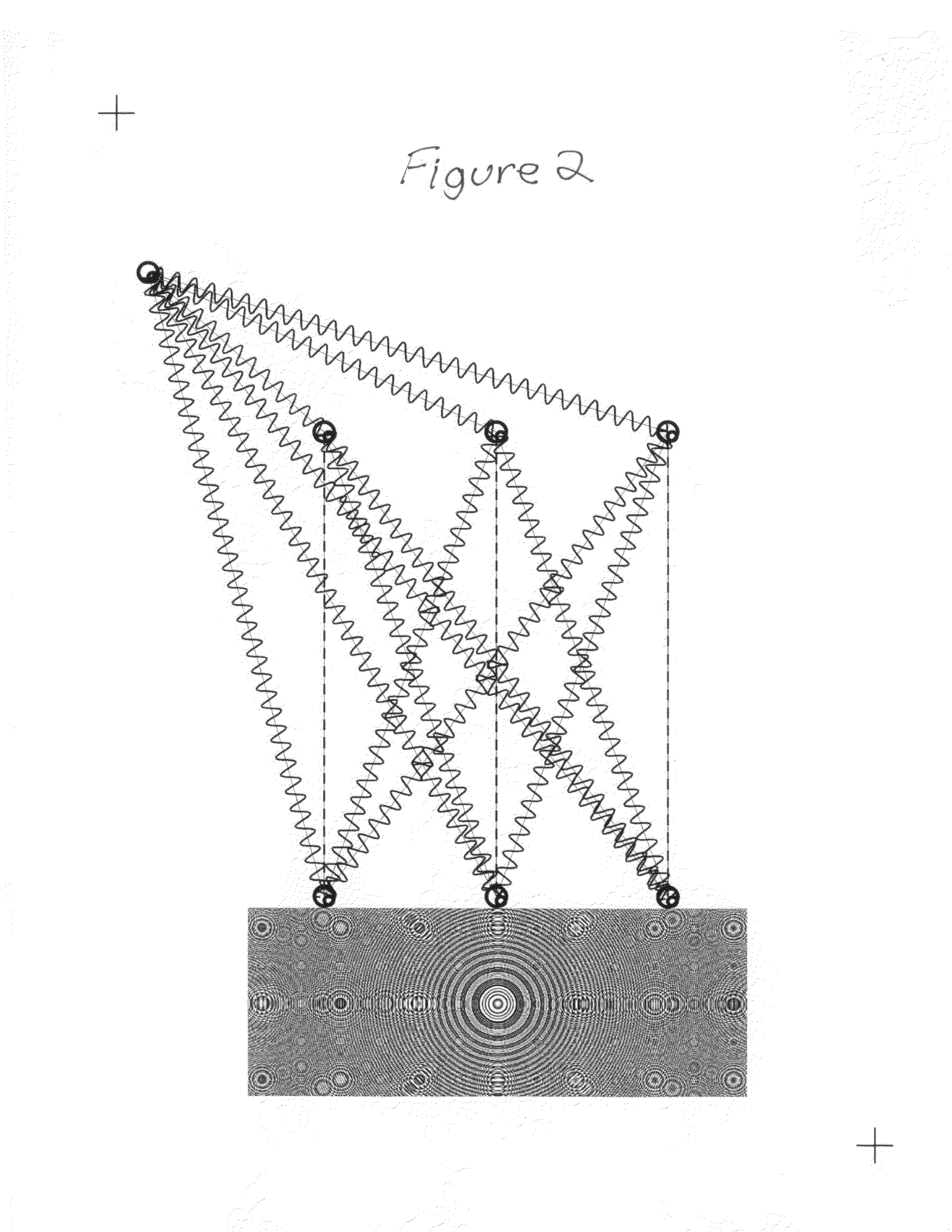Holographic computer system
a computer system and computer technology, applied in the field of holographic computer systems, can solve the problems of not much abstraction gained by using assembly language vs. direct programming in machine language, the depth of holograms generated using far-field rays is severely lacking, and the hologram may only be reconstructed using expensive focusing elements, etc., to achieve the effect of higher complexity
- Summary
- Abstract
- Description
- Claims
- Application Information
AI Technical Summary
Benefits of technology
Problems solved by technology
Method used
Image
Examples
Embodiment Construction
[0115]One or more data elements and / or datasets are acquired as input and may be preprocessed or filtered as desired. These data elements and / or datasets are collected by means of input apparatus, such as keyboards, scanners, communications networks, and sensory devices amongst others.
[0116]In certain cases, where the input data elements are waveforms, they are converted into pure harmonics, i.e, spectral components each containing a pure amplitude and a pure sine and / or cosine frequency. This is performed by one or more forward spectrum analyzers. These harmonics are saved, temporarily. As explained more fully, a reverse spectrum analyser later is used to reconstruct the said waveforms. The forward and reverse spectrum analyzers may be replaced by a computer or processor running a computer program such as a Discrete Fourier Transform, FFT (Fast Fourier Transform), or any other algorithm suitable for the purpose. They may also be replaced by a suitable apparatus incorporating the us...
PUM
 Login to View More
Login to View More Abstract
Description
Claims
Application Information
 Login to View More
Login to View More - R&D
- Intellectual Property
- Life Sciences
- Materials
- Tech Scout
- Unparalleled Data Quality
- Higher Quality Content
- 60% Fewer Hallucinations
Browse by: Latest US Patents, China's latest patents, Technical Efficacy Thesaurus, Application Domain, Technology Topic, Popular Technical Reports.
© 2025 PatSnap. All rights reserved.Legal|Privacy policy|Modern Slavery Act Transparency Statement|Sitemap|About US| Contact US: help@patsnap.com



